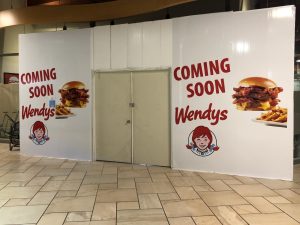Once again, New York’s budget was passed with little respect given to even the most basic expectations of transparency and democratic ideals. It was a week late, passed in the dead of night with almost no input from anyone outside the governor and legislative majority leaders, and it featured a record level of spending. New Yorkers have […]
Get Instant Access to This Article
Become a Central New York Business Journal subscriber and get immediate access to all of our subscriber-only content and much more.
- Critical Central New York business news and analysis updated daily.
- Immediate access to all subscriber-only content on our website.
- Get a year's worth of the Print Edition of The Central New York Business Journal.
- Special Feature Publications such as the Book of Lists and Revitalize Greater Binghamton, Mohawk Valley, and Syracuse Magazines
Click here to purchase a paywall bypass link for this article.
Once again, New York’s budget was passed with little respect given to even the most basic expectations of transparency and democratic ideals. It was a week late, passed in the dead of night with almost no input from anyone outside the governor and legislative majority leaders, and it featured a record level of spending. New Yorkers have grown sick and tired of this kind of leadership, and Gov. Kathy Hochul’s promises to change the way things are done in Albany have proven to be little more than lip service.
The final spending plan, at an unsettling $220 billion, shows no regard for fiscal prudence or responsible spending. Unsurprisingly, the enacted budget includes a 3.5 percent spending increase. In order to sustain that multi-billion-dollar spike in costs, the budget relies heavily on emergency federal funding — a
$12.7 billion injection that will be spread out over the next four years. To put the enormity of Albany’s new budget in context, the state of Texas has nearly 9 million more residents than New York but spends in two years ($248.6 billion) just above what New York spends in just one year.
Democrats in Albany have shown time and again they do not understand the value of taxpayer money, and this budget is another perfect example of that fact.
Perhaps the most disappointing element of this budget is what it will fail to do. Public-safety concerns and record inflation were glossed over with superficial remedies designed to do the bare minimum to placate critics. Judges need to be allowed to consider the public’s safety when setting bail and they still aren’t. Meanwhile, everyday items New Yorkers rely on are still too expensive. While New Yorkers continue to fear for their safety and worry about balancing family budgets, Democrats failed to adequately address either of these critical issues in the budget.
In addition, there was no long-term commitment to solving the state’s persistent affordability crisis. The cost of living and doing business is the primary driver of New York’s nation’s-worst outmigration, and that remains a problem despite a record-setting spending plan. One-time revenue streams won’t be here forever, and a sustained solution to cut costs, fees, and regulations is still needed.
While overall a disappointment, there were some agreements offering a modicum of promise that I was happy to see included in the final budget. For example, the temporary suspension of the state tax on gas will provide some relief for consumers and is part of $4.6 billion in tax cuts, which are overdue and welcome. This budget needed to do more, though, and it came up short where it counts.
Ultimately, this state budget is heavy on short-term solutions that make for neat press releases and is woefully shy on long-term systemic solutions to New York’s tax-and-spend mentality. The Assembly minority conference will continue to push back against these unsustainable policies and fight to improve the lives of New Yorkers from every region of the state. This budget leaves much to be desired and much work for us to do in the coming months.
William (Will) A. Barclay, 53, Republican, is the New York Assembly minority leader and represents the 120th New York Assembly District, which encompasses most of Oswego County, including the cities of Oswego and Fulton, as well as the town of Lysander in Onondaga County and town of Ellisburg in Jefferson County.



